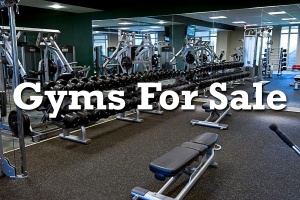In the competitive world of fitness, independent gym owners, boutique studio operators, and fitness entrepreneurs face constant pressure to maintain and grow their businesses. While passion, creativity, and hard work are essential, they are not always enough to ensure long-term success. To truly elevate your gym to the next level, you need a clear understanding of your business’s strengths and weaknesses. This is where an operational analysis comes into play.
An operational analysis is a comprehensive review of your gym’s internal processes, financial health, customer experience, and overall performance. It provides valuable insights that can help you streamline operations, improve member satisfaction, and increase profitability. In this article, we will explore the importance of conducting an operational analysis and how it can serve as a powerful tool to propel your gym business forward.
1. Identifying Operational Inefficiencies
One of the primary benefits of an operational analysis is its ability to uncover inefficiencies within your gym’s operations. These inefficiencies may be costing you time, money, and resources without you even realizing it.
- Streamlining Processes: An operational analysis will help you identify bottlenecks in your day-to-day operations, such as lengthy member check-in procedures, inefficient scheduling systems, or redundant administrative tasks. By streamlining these processes, you can improve productivity and reduce costs.
- Resource Allocation: Inefficiencies often stem from poor resource allocation. An analysis can reveal whether you are overstaffed during certain hours, underutilizing equipment, or spending too much on non-essential services. Adjusting resource allocation based on these findings can lead to significant savings and improved operational effectiveness.
- Time Management: Time is one of your most valuable resources. An operational analysis can help you and your staff manage time more effectively by identifying tasks that can be automated or delegated. This allows you to focus on more strategic aspects of the business, such as member engagement and business development.
2. Enhancing Member Experience
Your members are the lifeblood of your gym. An operational analysis provides critical insights into the member experience, allowing you to make informed decisions that enhance satisfaction and retention.
- Assessing Member Touchpoints: The analysis will evaluate all touchpoints that members interact with, from the moment they walk through the door to the moment they leave. This includes the quality of customer service, cleanliness of facilities, availability of equipment, and overall atmosphere. Understanding these touchpoints allows you to make targeted improvements that elevate the member experience.
- Feedback and Surveys: An essential part of an operational analysis is gathering feedback directly from your members. Surveys, focus groups, and one-on-one interviews can provide valuable insights into what your members love about your gym and what areas need improvement. Acting on this feedback can lead to higher member satisfaction and loyalty.
- Personalization and Engagement: The analysis can help you understand your members’ preferences and behaviors better, enabling you to offer more personalized services. Whether it’s customizing workout plans, offering targeted promotions, or hosting special events, enhancing personalization can significantly improve member engagement and retention.
3. Improving Financial Performance
Financial health is the backbone of any successful gym business. An operational analysis provides a detailed examination of your financial performance, identifying opportunities for cost savings and revenue growth.
- Revenue Streams: The analysis will evaluate all existing revenue streams, such as membership fees, personal training sessions, merchandise sales, and group classes. It can help you identify underperforming areas and suggest strategies to boost revenue, such as introducing new services or optimizing pricing structures.
- Expense Management: An operational analysis takes a close look at your expenses, from payroll and rent to utilities and supplies. It can uncover areas where costs can be reduced without compromising quality. For instance, renegotiating supplier contracts, reducing energy consumption, or optimizing staff schedules can lead to significant savings.
- Profitability Ratios: The analysis will also assess key financial ratios, such as profit margins, return on investment (ROI), and cash flow. These metrics provide a clear picture of your gym’s financial health and highlight areas where improvements can be made. By optimizing these ratios, you can increase profitability and ensure long-term sustainability.
4. Strategic Planning and Growth
An operational analysis is not just about identifying current issues—it’s also a critical tool for strategic planning and future growth. It provides a roadmap for scaling your business and staying competitive in the ever-evolving fitness industry.
- Market Positioning: The analysis will help you understand your position in the market relative to competitors. It assesses your unique selling propositions (USPs), brand strength, and market share. This information is crucial for making strategic decisions about expansion, marketing, and service offerings.
- Expansion Opportunities: Whether you’re considering opening a new location, adding more classes, or launching a new product line, an operational analysis provides the data needed to make informed decisions. It evaluates the potential risks and rewards of expansion, helping you plan for growth while minimizing risk.
- Innovation and Adaptation: The fitness industry is constantly evolving, with new trends and technologies emerging regularly. An operational analysis can help you stay ahead of the curve by identifying areas where innovation is needed. This could include adopting new fitness technologies, expanding your digital presence, or introducing cutting-edge classes and programs.
5. Employee Performance and Development
Your staff is integral to the success of your gym. An operational analysis provides insights into employee performance and identifies opportunities for development, ensuring that your team is motivated, skilled, and aligned with your business goals.
- Performance Evaluation: The analysis will assess the performance of your staff, including trainers, salespeople, and administrative personnel. It can identify top performers, as well as those who may need additional training or support. By addressing performance gaps, you can ensure that your team operates at its best.
- Training and Development: Based on the findings of the analysis, you can develop targeted training programs to enhance your staff’s skills. This might include sales training for your front desk team, advanced fitness certifications for trainers, or customer service workshops for all employees. Investing in staff development not only improves service quality but also boosts employee satisfaction and retention.
- Leadership and Culture: The analysis also looks at the overall leadership and culture within your gym. Are your managers effectively leading their teams? Is the work environment positive and motivating? Addressing these questions is essential for building a strong, cohesive team that is committed to your gym’s success.
6. Mitigating Risks and Ensuring Compliance
Operational analysis is crucial for identifying and mitigating risks that could potentially harm your business. It also ensures that your gym remains compliant with industry regulations and standards.
- Risk Assessment: The analysis will identify potential risks, such as legal liabilities, safety concerns, and financial vulnerabilities. It will also evaluate your current risk management strategies and suggest improvements. Proactively addressing risks can prevent costly problems down the line.
- Compliance Check: Ensuring compliance with industry regulations, such as health and safety standards, employment laws, and data protection regulations, is critical. An operational analysis will review your compliance status and recommend any necessary changes to avoid fines and legal issues.
- Crisis Preparedness: In today’s unpredictable world, being prepared for crises—whether it’s a pandemic, natural disaster, or financial downturn—is essential. The analysis can help you develop contingency plans and build resilience into your operations, ensuring that your gym can weather any storm.
7. Driving Continuous Improvement
Finally, an operational analysis fosters a culture of continuous improvement within your gym. It encourages ongoing evaluation and refinement of your operations, ensuring that your business remains agile, competitive, and successful.
- Performance Metrics: The analysis will establish key performance indicators (KPIs) that you can use to monitor your gym’s performance over time. Regularly reviewing these metrics allows you to track progress, identify trends, and make data-driven decisions.
- Feedback Loops: Implementing feedback loops within your operations allows you to continually gather insights from members, staff, and other stakeholders. This feedback is invaluable for making ongoing improvements and ensuring that your gym evolves to meet changing needs.
- Adaptation and Flexibility: The fitness industry is dynamic, with new trends, technologies, and consumer preferences emerging regularly. An operational analysis helps you stay adaptable and flexible, enabling you to quickly respond to changes and seize new opportunities as they arise.
Conclusion
Conducting an operational analysis is not just a one-time exercise—it’s a critical, ongoing process that can transform your gym business. By identifying inefficiencies, enhancing member experience, improving financial performance, and fostering a culture of continuous improvement, an operational analysis equips you with the insights and strategies needed to take your gym to the next level. As an independent gym owner, boutique studio operator, or fitness entrepreneur, investing in an operational analysis is an investment in the long-term success and sustainability of your business. With a clear roadmap in hand, you can confidently lead your gym into a future of growth, innovation, and excellence. Contact Jim here.
Click here for gym owner or personal trainer insurance options. Custom Apparel with no inventory. Click here. Read this book if you want to grow your gym business.
If your fitness business is in need of a turnaround, a boost in sales, or a fresh marketing approach, we’re here to help. We offer a free initial consultation to discuss your specific situation and explore how our expertise can make a difference. Don’t hesitate to reach out to Jim Thomas at 214-629-7223 or find valuable insights on YouTube. Follow me on LinkedIn
An Outsourced CEO, Turnaround Expert and Author, Jim Thomas is the founder and president of FMC USA Inc., a management consulting, turnaround, financing and brokerage firm specializing in the leisure services industry. With more than 25 years of experience owning, operating and managing facilities of all sizes, Thomas lectures and delivers seminars, webinars and workshops across the globe on the practical skills required to successfully overcome obscurity, improve gym sales, build teamwork and market fitness programs and products. Visit his Web site or YouTube Channel.






